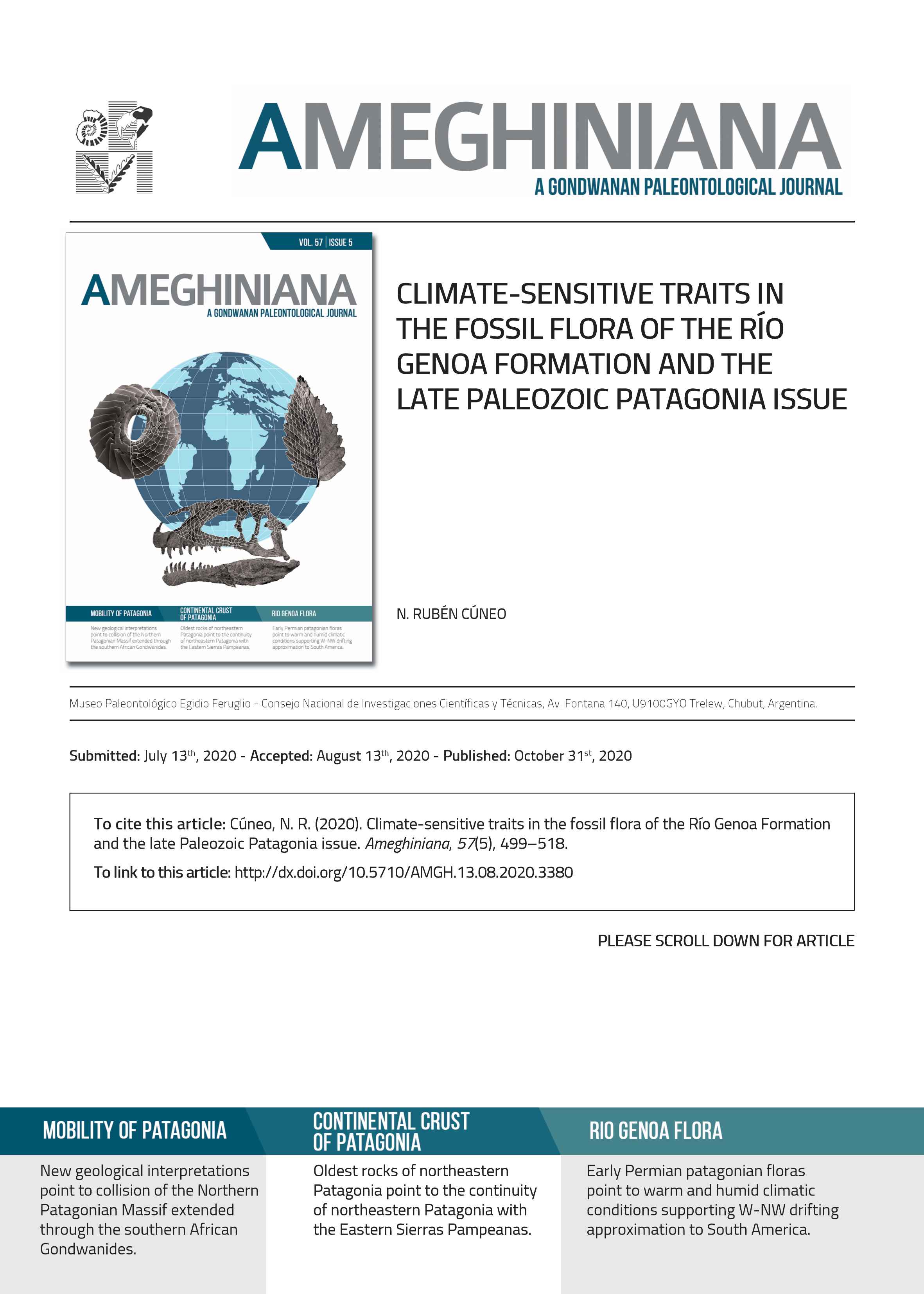CLIMATE-SENSITIVE TRAITS IN THE FOSSIL FLORA OF THE RIO GENOA FORMATION AND THE LATE PALEOZOIC PATAGONIA ISSUE
DOI:
https://doi.org/10.5710/AMGH.13.08.2020.3380%20Keywords:
Patagonia, Permian, Fossil Plants, Paleoclimates, PaleogeographyAbstract
Paleoclimate traits are highly varied at the diverse paleoflora of the Río Genoa Formation in Patagonia. They are thoroughly analyzed in order to define macroclimate parameters that ruled the terrestrial vegetational growth during the early Permian. Plant-climate relationships have been historically used for understanding the distribution of present/past vegetation since they represent a continuous feedback along the terrestrial environments on Earth. Most of the indicators found in Patagonia clearly suggest warm and humid conditions during the entire deposition of the studied unit. Such conditions, related to subtropical climates, cannot be correlated with paleoclimate approaches originated from other proxies. This is due to several imprecisions that affect the interpretation of the paleogeographic position of Patagonia. different hypotheses are erected in order to explain the paleofloristic and paleoclimatic anomaly present in southern South America, which should encourage new efforts to better understanding the geological dynamics of southwestern Gondwana.

Downloads
Published
Issue
Section
License
Authors publishing in Ameghiniana have the option of making their article freely available online. Authors opting for the Open Access must pay a fee of $300 (US dollars) to cover article-processing costs and to ensure the article is made open access. Please contact the Production Team after the acceptance of your manuscript if you are interested in making your article Open Access. This option implies by default a license Creative Commons Attribution Non-Commercial-NoDerivs License (CC BY NC ND). If your funding institution requires a different licensing option please communicate this to the Production Team after the acceptance of your manusctipt.










